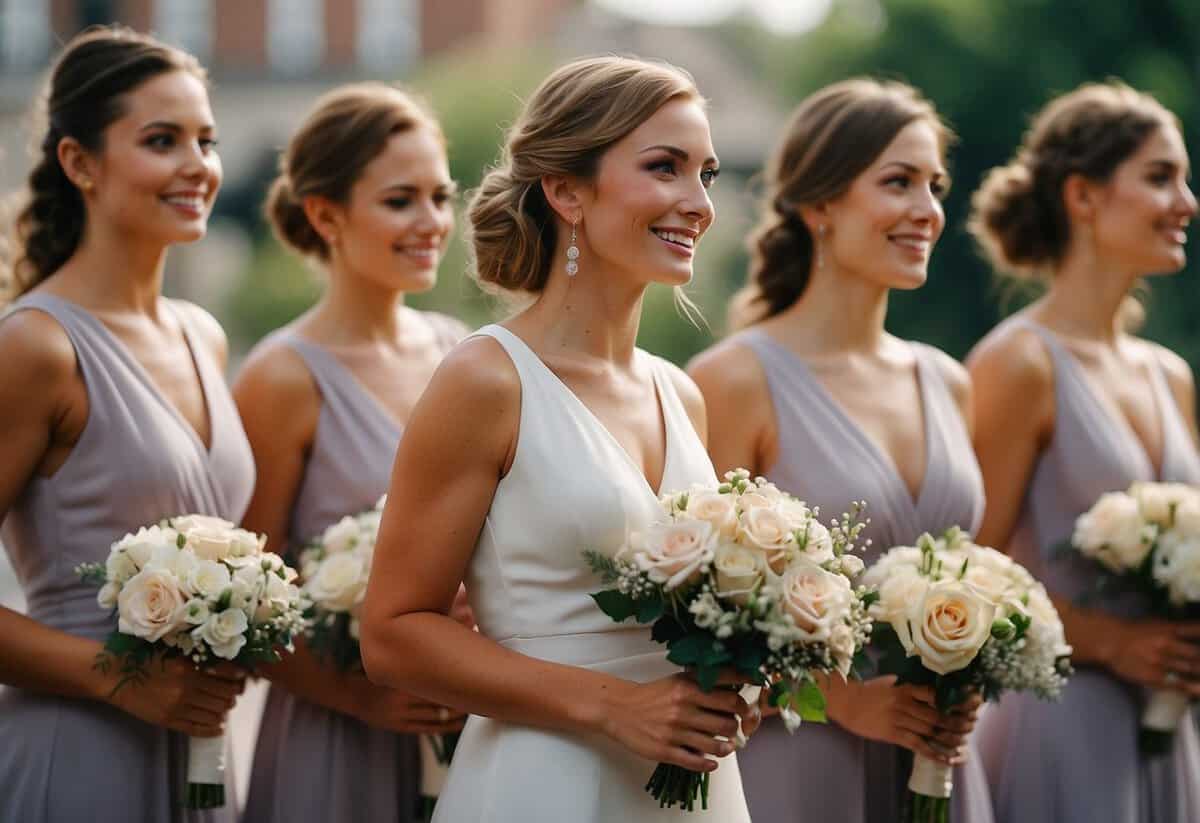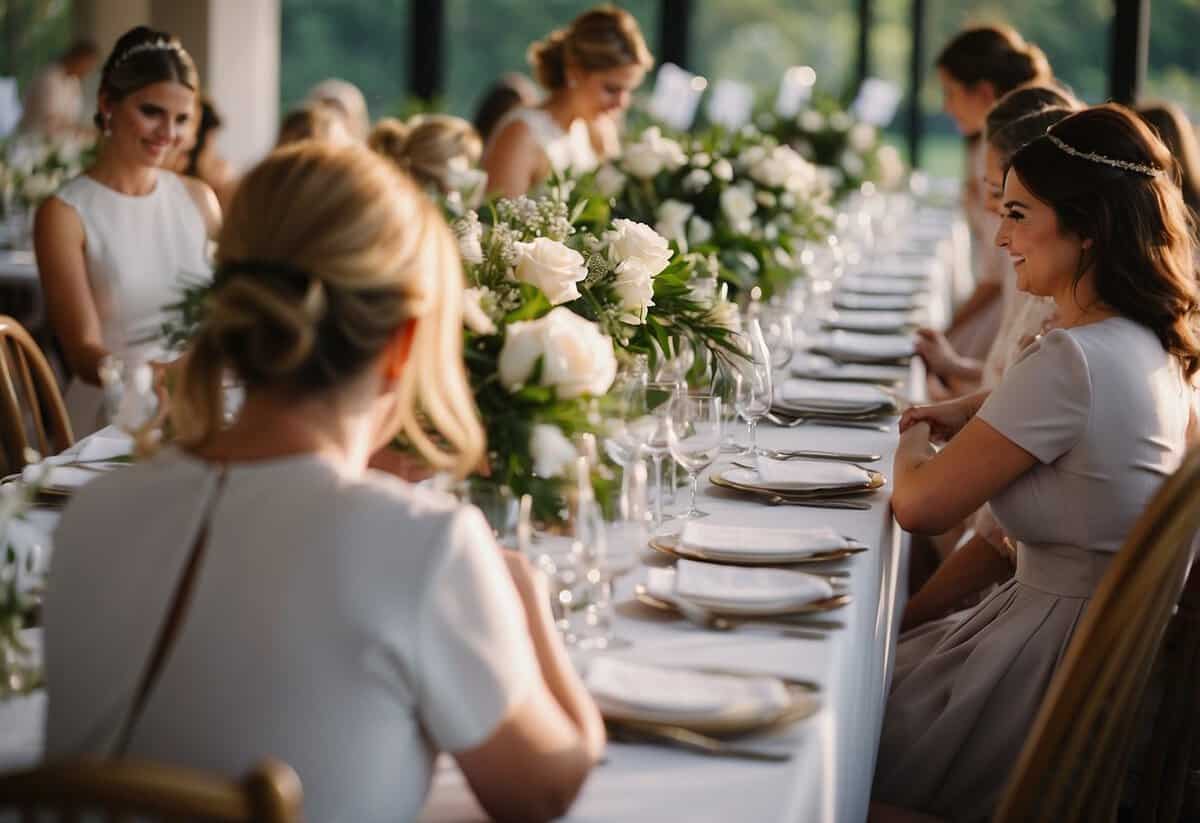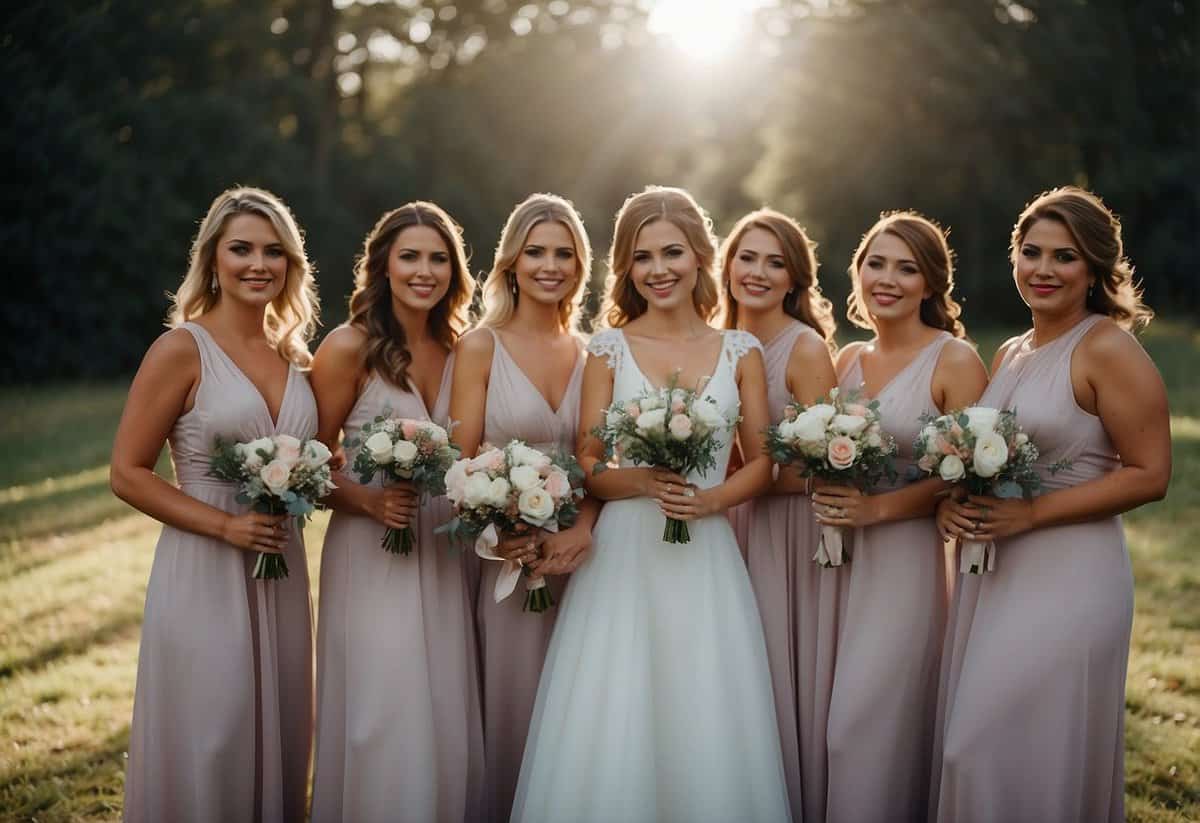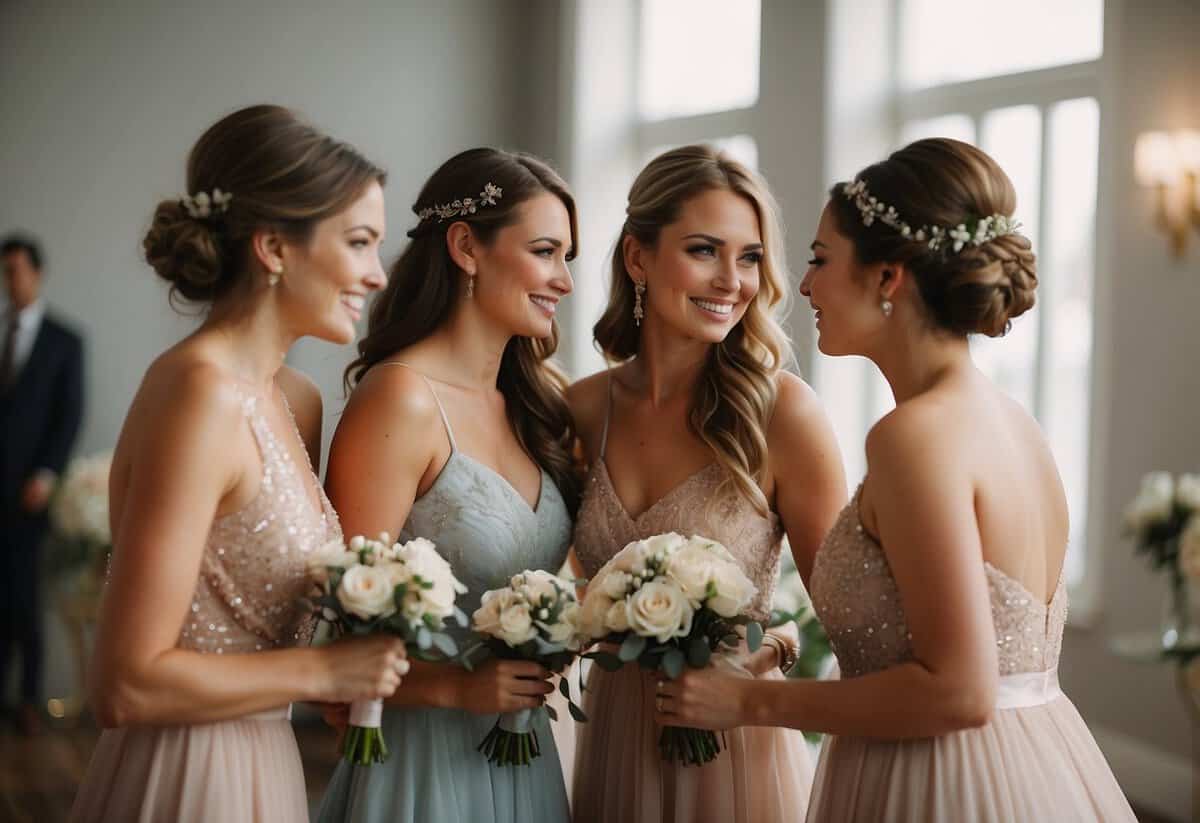How Many Bridesmaids for 100 Guests? Tips for Planning the Perfect Wedding Party
Planning a wedding can be a thrilling experience, but it also comes with many decisions. One common question revolves around how many bridesmaids you should have, especially when you have 100 guests. The number of bridesmaids often depends on the size and formality of your wedding. For a wedding with around 100 guests, having about 4 to 6 bridesmaids is usually a good balance.

Choosing the right number of bridesmaids is crucial for both the logistics and the overall feel of your wedding day. Having too many bridesmaids can overwhelm the event, while too few might not reflect the celebration’s importance. Think about who you want by your side on this special day, and remember that the focus should be on enjoying the moment rather than just on the numbers.
Your wedding day is a time for celebration, and the bridesmaids you choose will play a key role in making it memorable. It’s essential to pick people who support and uplift you. This way, you ensure not only a beautiful wedding but also a joyful planning process and celebration. For more detailed guidance on choosing your bridesmaids, check out this invaluable advice on how many bridesmaids are too many.
Deciding the Number of Bridesmaids

Picking the number of bridesmaids for your wedding is a personal choice that can be affected by the size and formality of your wedding, the responsibilities you’d like them to take on, and cultural or personal preferences.
Celebration Size and Formality
The size and formality of your wedding can greatly influence how many bridesmaids you decide to have. For a formal wedding with around 100 guests, you might opt for six to eight bridesmaids.
A smaller or more informal wedding might work better with fewer bridesmaids. Keep in mind that the average number of bridesmaids is around six. Your wedding’s style and vibe should help guide your decision.
Role and Responsibilities
Bridesmaids often take on various tasks and roles before and during the wedding. They might help with planning, dress shopping, and organizing the bridal shower. On the wedding day, they provide emotional support and help ensure everything runs smoothly.
Make sure you consider who’s capable of these responsibilities. If your bridal party will have heavy tasks, you may need a larger number to distribute the workload evenly. This will help reduce stress on you and your wedding party.
Cultural and Personal Considerations
Cultural traditions and personal preferences can also significantly influence your decision. Some cultures have specific guidelines on the number of bridesmaids and their roles in the wedding.
Additionally, consider your relationships with friends and family members. You may have people in your life who you particularly want to include. This is a day to share with those closest to you, so ensure your choices reflect your personal connections and priorities.
Bridesmaids’ Contributions

Bridesmaids play significant roles in both financial and emotional aspects of your wedding. They provide essential support before and during your special day, contributing to its success and your peace of mind.
Financial Aspects
Your bridesmaids often help cover various expenses related to wedding events. This can include buying their bridesmaid dress and contributing to the bridal shower and bachelorette party. It is important to consider your wedding budget and communicate openly about costs.
Some brides may choose to subsidize part of these expenses, like paying for accessories or covering a portion of the bridesmaid dress. Being transparent with your bridesmaids about costs can prevent misunderstandings and ensure everyone feels comfortable with their financial contributions.
Pre-Wedding Support
Before the wedding, bridesmaids provide key support in planning and organizing events. They might help plan your bridal shower, work on decorations, or help arrange the bachelorette party. Their involvement can ease the stress of planning and provide memorable moments leading up to your wedding day.
Bridesmaids also offer emotional support during this time. They can lend a listening ear when you’re feeling overwhelmed and help with decisions about decorations and other wedding details. This makes the pre-wedding experience more enjoyable and less stressful.
Wedding Day Assistance
On your wedding day, bridesmaids have several important roles. They help you get ready, assist with your dress, and ensure everything runs smoothly. Their duties might include managing the flower girl, organizing transportation, and keeping the schedule on track.
Bridesmaids also play a role in calming your nerves, offering a steady presence when emotions run high. They ensure the bridal party moves efficiently from photos to the ceremony to the reception, providing crucial support throughout the day.
Having attentive and caring bridesmaids means you can enjoy your big day without worrying about the small details, making everything flow seamlessly.
Selecting the Bridal Party

Choosing your bridal party can feel overwhelming, but focusing on close relationships can help. Consider both friends and family as well as obligations to extended relatives.
Family and Friends
Start with siblings or anyone who feels like siblings. Your sister or sister-in-law may be the perfect choice for your maid of honor. Close friends who have supported you through thick and thin are great options for potential bridesmaids. It’s important to have those you genuinely care about by your side.
Maid of honor: This role is often given to someone you share a deep bond with.
Potential bridesmaids: Think about those with whom you have a strong relationship.
Extended Relatives and Obligations
You might also feel obligated to include extended relatives. A cousin or family member who you have a special connection with could be a good fit. Consider how including certain people might impact family dynamics.
Family obligations: Including your cousin who you grew up with can show your strong family ties.
Balancing relationships: Ensure your bridal party feels harmonious and supportive.
By balancing these considerations, you’ll ensure that your bridal party is a reflection of your closest relationships and family ties.
Outfitting the Bridal Party

Planning how your bridal party will look involves careful thought about their attire and how it coordinates with the overall theme of your wedding. Balancing personal style with a cohesive look for the bridal party is key.
Bridesmaids’ Attire
Choosing the right bridesmaid dress is important. For a wedding with 100 guests, you might opt for 4-6 bridesmaids to ensure a balanced look.
You can choose dresses in the same color but different styles to suit each bridesmaid’s body type. Bouquets should coordinate with the bridesmaid dresses and the wedding theme. If the dresses are simple, you might choose more elaborate bouquets to add visual interest.
Make sure to plan for dresses that the bridesmaids will feel comfortable in, both in terms of fit and style. Accessorizing with matching shoes, jewelry, and hairpieces can help pull the entire look together.
Coordinating With Groomsmen
Your groomsmen’s attire should complement what the bridesmaids are wearing. If your bridesmaids are in soft pastels, your groomsmen might wear light gray or navy suits to coordinate well.
You can add matching elements such as ties, pocket squares, or boutonnieres that reflect the color scheme of the bridesmaids’ dresses. The flower girl and the ring bearer should also have outfits that fit the theme, like a similar color palette or style.
Coordination extends to small details like cufflinks and socks, which can be unique yet fit within the wedding’s style. Make sure the overall look is polished and cohesive to create beautiful memories in photos.
The Wedding Ceremony Structure
Weddings have unique ways to highlight the special roles of participants. The structure often includes a well-organized entry for everyone involved and specific duties during the event.
Processional Arrangements
During the ceremony, the processional order is key. Typically, the officiant leads the way. They are followed by the grandparents and parents of the couple. Then, the groom or one of the partners walks in next.
The wedding party follows, starting with those standing farthest from you, such as the ushers and groomsmen. They enter first, with bridesmaids following. The maid of honor and best man are the last to walk in before the bride.
The bride usually enters last, often escorted down the aisle. This tradition symbolizes her leaving her family to join her partner. Including a flower girl and ring bearer can add charm. The flower girl sprinkles petals to ward off evil spirits, while the ring bearer carries the rings.
Roles During the Ceremony
During the ceremony, specific roles are vital. The officiant oversees the service, guiding you through vows and the exchange of rings. Your wedding party stands beside you for support.
The maid of honor and best man have special duties. The maid of honor holds your bouquet and may adjust your dress. The best man usually holds the rings until the exchange.
Ushers help guests find seats, usually dividing by ‘bride’s side’ and ‘groom’s side.’ They also ensure the ceremony flows smoothly. Including younger roles like the flower girl and ring bearer adds a layer of family tradition.
It’s essential that each participant knows their role to ensure the event proceeds beautifully.



